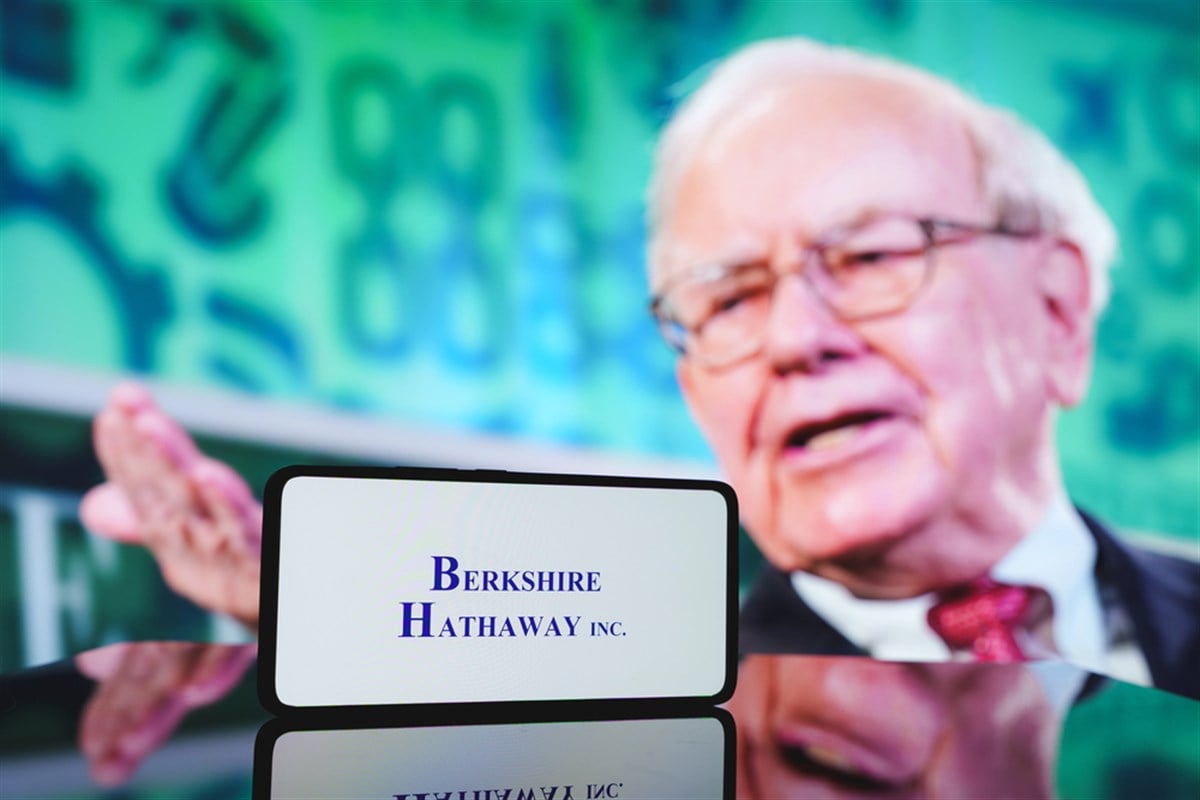|
|
|

|
|||||

|
|

As famed investor Warren Buffett—chairman of Berkshire Hathaway (NYSE: BRK.B)—nears the end of his six-decade-long tenure of the Omaha-based multinational conglomerate, he has now increased the firm’s cash position to a record $381 billion.
For context, according to its most recent Form 13F filing, Berkshire’s portfolio includes $257.521 billion in managed securities. That enormous amount of sidelined cash has led to speculation by pundits and retail investors alike that the Oracle of Omaha is foretelling an imminent market crash.
That’s an argument that looks increasingly feasible when compared to the cash reserves of other mega-cap companies. NVIDIA (NASDAQ: NVDA), for example, which became the first publicly traded company to surpass a market cap of $5 trillion on Oct. 29, has cash of $56.8 billion.
However, comparing NVIDIA and Berkshire is hardly an apples-to-apples comparison. The former is central to the ongoing AI-fueled market rally. The latter’s an umbrella corporation that owns and operates a range of defensive and cyclical businesses spanning insurance and reinsurance, utilities, energy, freight transportation, and retail.
To better understand Buffett’s record cash position and what the company may do with it, turning to his final shareholder letter and Berkshire’s most recent Form 13F filing can provide clues.
Investors on the hunt for clues may have read the chairman’s final letter to shareholders. Published on Monday, Nov. 10, the letter is replete with Buffettisms. But it fell short of directly addressing the enormous cash holdings Berkshire has amassed.
Buffett did, however, offer insights into his personal stock, noting that he will be keeping “a significant amount of ‘A’ shares until Berkshire shareholders develop the comfort with [successor] Greg [Abel].” Throughout the latter part of the letter, Buffett praises Abel’s ability to understand Berkshire’s businesses in ways far better than he does.
But one thing did stand out. Buffett noted that “Berkshire has less chance of a devastating disaster than any business [he] knows .” He added that “Berkshire will always be managed in a manner that will make its existence an asset to the United States and eschew activities that would lead it to become a supplicant.”
That underscores the company’s value-driven approach to investing—as well as its record cash on hand—which Buffett has leaned on at Berkshire since 1965. It doesn’t, however, suggest that he is anticipating a market implosion.
Examining Berkshire’s current portfolio positions can suggest what Buffett is both bullish and bearish on as he approaches retirement. According to its most significant holdings, he has amassed four positions with double-digit weightings:
Those four positions account for over 63% of Berkshire’s entire portfolio, which implies —at the very least—some degree of concentration risk. However, the company’s Apple position was downsized by 25.76%, and of the Magnificent Seven companies, the Cupertino-based iPhone maker may have the least amount of AI exposure.
Meanwhile, the other four double-digit positions indicate that Berkshire is bullish on financials and committed to consumer staples. That’s also evident when scrolling further down the list of the firm’s holdings, which include Moody’s (NYSE: MCO), Chubb (NYSE: CB), Visa (NYSE: V), and Kraft Heinz (NASDAQ: KHC).
Financials have performed fifth best among the S&P 500’s 11 sectors this year with a year-to-date (YTD) gain of 10.10%. Much of that success came earlier in 2025 amid the then-incoming administration’s deregulatory financial platform. But after opening Berkshire’s Bank of America position in Q3 2017, Buffett has trimmed it by 26.3 million shares.
Berkshire’s fifth-largest position is in underperforming oil major Chevron (NYSE: CVX), which trails the S&P 500 this year by 10%. Buffett recently increased his position by nearly 3.5 million shares, cementing his commitment to the energy sector and to strong dividend payers in general.
At current prices, Chevron’s dividend yield of 4.38% spins off $6.84 per share annually, or $1.71 per share each quarter. Buffett’s bolstered position in CVX, as well as other Occidental Petroleum Stock (NYSE: OXY)—another top-12 holding which is down more than 16% YTD—suggests that the chairman is bullish on energy’s lagging performance, which could be a target for Berkshire’s cash reserve in Q4 and heading into 2026.
That’s likely the case. Rather than prophesying a severe market downturn, Berkshire’s record cash position is likely a combination of taking profits amid the major indices' all-time highs while positioning for buying opportunities when healthy pullbacks or corrections occur.
After all, one of the most famous Buffettisms remains that “it’s far better to buy a wonderful company at a fair price than a fair company at a wonderful price.”
For a man who made his fortune being bluntly honest with shareholders, there’s likely no need to read between the lines when it comes to Berkshire’s record cash on hand.
Before you make your next trade, you'll want to hear this.
MarketBeat keeps track of Wall Street's top-rated and best performing research analysts and the stocks they recommend to their clients on a daily basis.
Our team has identified the five stocks that top analysts are quietly whispering to their clients to buy now before the broader market catches on... and none of the big name stocks were on the list.
They believe these five stocks are the five best companies for investors to buy now...
The article "As Warren Buffett Nears His Exit, Berkshire's Amassed Record Cash" first appeared on MarketBeat.
| 6 min | |
| 20 min | |
| 25 min | |
| 44 min | |
| 1 hour | |
| 1 hour | |
| 2 hours | |
| 2 hours | |
| 3 hours | |
| 5 hours | |
| Dec-23 | |
| Dec-23 | |
| Dec-23 | |
| Dec-23 | |
| Dec-23 |
Join thousands of traders who make more informed decisions with our premium features. Real-time quotes, advanced visualizations, backtesting, and much more.
Learn more about FINVIZ*Elite